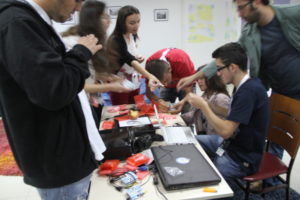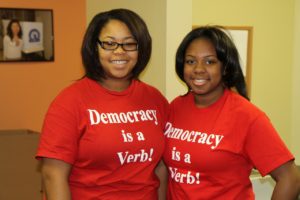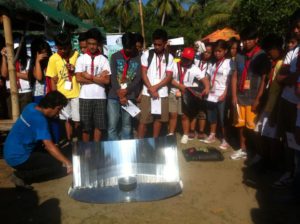About 30 children were originally keen to take part in a Gangnam style Greenpeace flashmob that took place in Amsterdam in mid-September, but after the first training session took place and others had a chance to see the dance rehearsals, that number began to grow.
By the time the group gathered in a public square on a clear afternoon, 65 children and one polar bear mascot had moblised in an event drawing attention to the importance of sustainable transportation and the effect of excessive greenhouse gas emissions on arctic ecosystems.
At least 200 people gathered to watch the dance unfold, which the team was pleased to see, and close to 3,000 people have viewed the dance on YouTube in the month since it was posted.
The event was supported by the Greenpeace Netherlands’ education department and aimed at getting young people talking about climate change and its many related issues as part of the Greenpeace Save the Arctic campaign.
Wil Van Egdom, who works in the Amsterdam office as a Greenpeace International information security officer, says preparation for the event involved a week-long education process that saw five Greenpeace volunteers, including Wil and Anne Broeksma from Greenpeace Netherlands, connect with 23 school groups, followed by training for the flashmob.
The volunteers first explained to the children the purpose of Greenpeace before sharing information on the impact of greenhouse gas emission on the climate.
They then asked if the children wanted to take part in a “Greenpeace Flashmob” with a goal of inspiring adults to make sustainable transportation decisions. When Wil saw the growth of the group, he says it was a great example of how good campaigns can unfold.
Key to this success was doing the event in a visible space, making it fun, and ensuring people understood the issues before being inspired to get involved.
As a result, people “become engaged and enthusiastic,” Wil says, noting that anything that helps young people become interested in environmental issues is important, which is why he’s been connected to similar in-school education sessions for the past two years.
“That’s where our future lies, it’s in the young kids and I think we need to engage them now when they are 10-, 11-, 12-years-old,” he says.
The success of this campaign has Wil thinking ahead to next year, where he sees the kids numbered in the hundreds.
Wil says maintaining contact with the parents to whom they connect will be part of the plan to deepen engagement as they look forward to next year. He says regular contact with new people introduced to Greenpeace, like the student’s parents, will raise greater awareness of Greenpeace’s work.
— Kristian Partington
Do you have an innovation in mobilisation and people-powered campaigns? Share it with Mob Lab
Categories:
tech, tools and tactics



